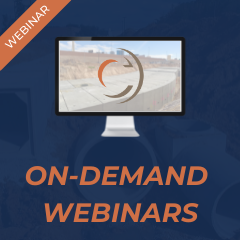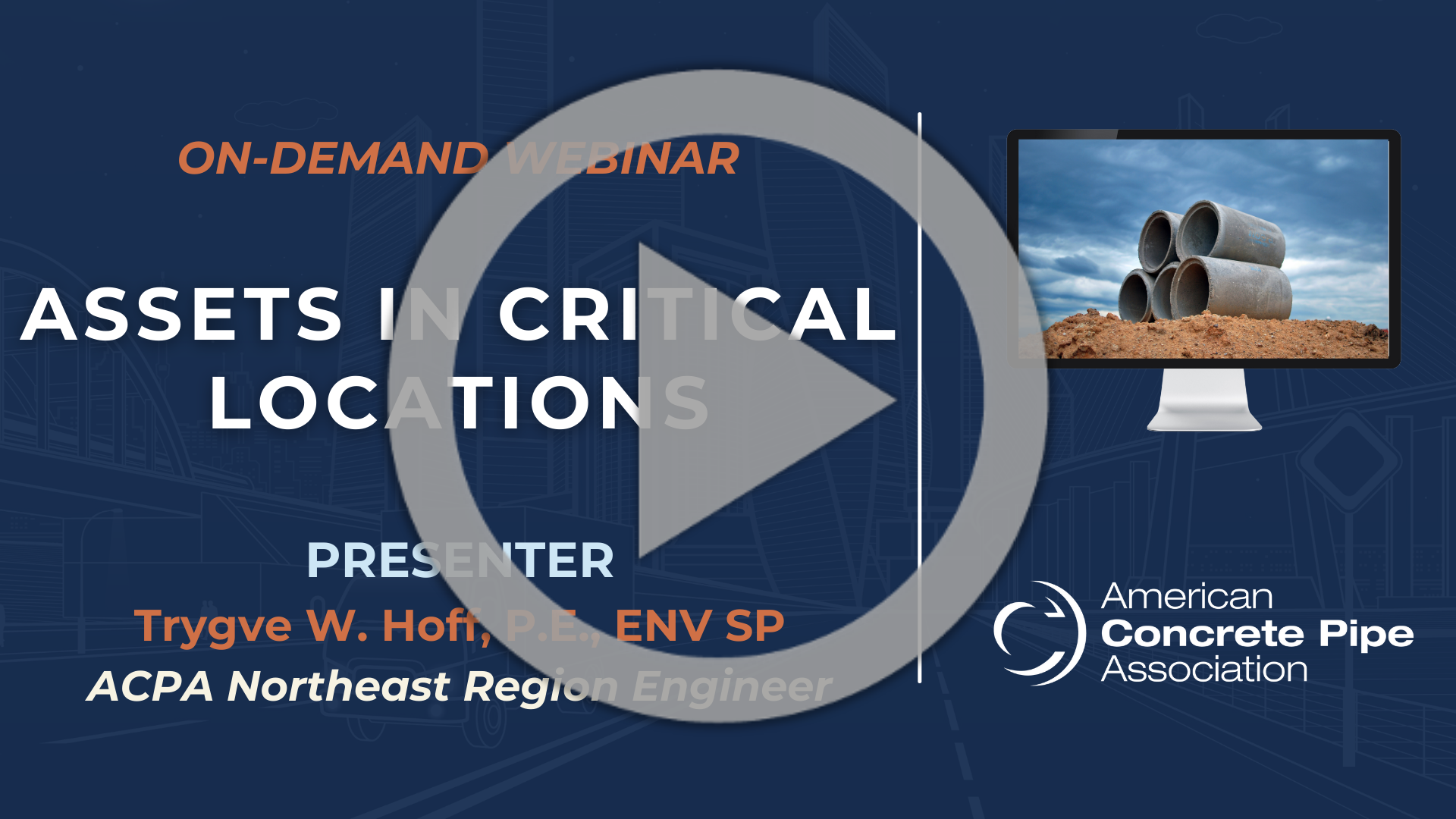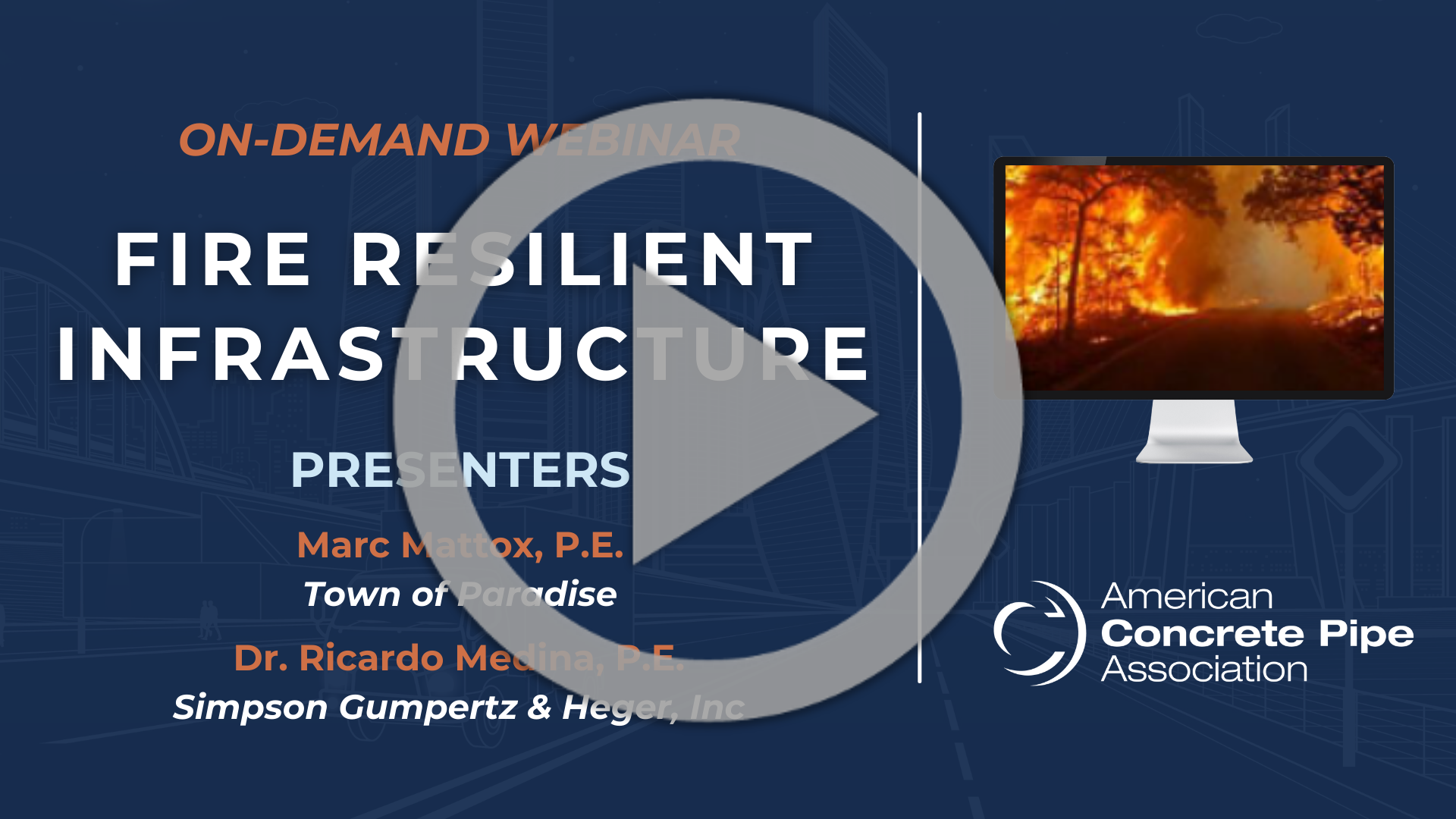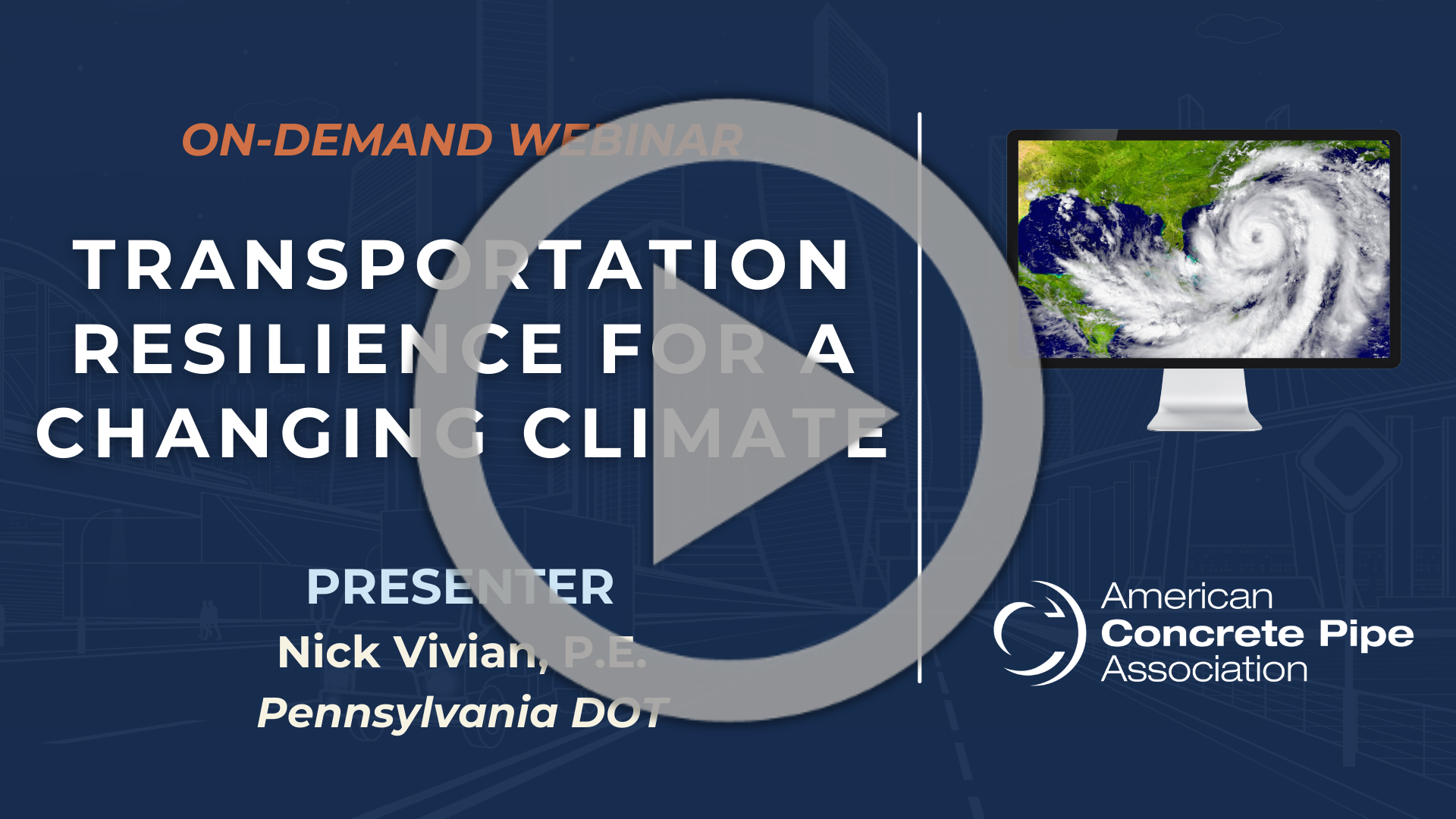

RCP & Box Culvert Manufacturing Methods
Description: This presentation will explore the process of manufacturing reinforced concrete pipe and box culverts starting with raw material handling all the way through final curing. It covers mix designs, batching concrete, reinforcing cage details, forming equipment, wet cast and dry cast manufacturing methods and curing fundamentals. After attending the webinar the attendee should be able to:
Assets in Critical Location
Description: Asset Management provides agencies/owners both a long-term roadmap toward better supervision of asset inventories, as well as data necessary for logical material placement and usage. This information allows agencies to make sound engineering decisions backed by years of data, which in turn improves resilience of the infrastructure system and maximizes sustainability. In this webinar, we look at current issues and actions that impact such decisions in critical locations such as evacuation routes, flood prone areas, emergency access routes, and others. We also explore how asset management data can be used to help prepare for recovery from major natural disasters, and to determine the most appropriate mitigation planning. After attending the webinar the attendee should be able to:
Fire Resilient Infrastructure
Description: Industry experts, Marc Mattox, P.E., Town of Paradise, CA, and Dr. Ricardo Medina, P.E., SGH, discuss considerations for fire-prone areas including community preparedness and evacuation route planning. Hear key learnings from the 2018 Camp Fire and the importance of resilient infrastructure. Learn about the resiliency based ASTM design standard for culvert and storm drainpipes exposed to wildfire events. In the recording, you will hear firsthand the findings from the 2018 Camp Fire and learn about its effects on roadway culverts. Additionally, you will gain insights on the process and workings the California Regional Quality Water Control Board in their efforts to replace 66 extensively damaged high-density polyethylene (HDPE) and corrugated metal pipe (CMP) culverts with reinforced concrete pipes (RCP). After attending the webinar the attendee should be able to:
Transportation Resilience for a Changing Climate
Description: This presentation demonstrates ways that PennDOT is monitoring extreme weather event and details the techniques and programs used to compile data from these events. Explanation of the results shows the changing climate and the effect on Pennsylvania’s current transportation infrastructure. Solutions currently under development to mitigate the impacts are also presented. PennDOT’s pro-active response focusing on the goal of solving these climate change problems are also highlighted. The content will aid viewer’s understanding of the change in weather patterns related to climate and PennDOT’s partnerships and collaboration with other agencies. Asset damage and financial burden will be shared to provide perspective to attendees and highlight the need for immediate solutions. After attending the webinar the attendee should be able to:
Engineering Ethics
Description: Ethics are more than just an ideal for Engineers, it is the foundation of our profession. This course will explore the past cases, hypothetical concepts, and the current canons of Ethics from two different engineering societies. The course is broken down into four easily consumed sections: 1) History, 2) Canons, 3) Current Events, and 4) Application. After attending the webinar the attendee should be able to:
Understanding Box Culvert Designs
Description: Watch industry design experts as they walk through a standard concrete box culvert design and the options for reviewing various levels of design details. We also review how to address state specific parameters using the Eriksson Culvert software and how it is used as a data link with AASHTOWare Bridge Rating (BrR) for load rating box culverts. After attending the webinar the attendee should be able to:
Resilience & Sustainability of Drainage Infrastructure
Description: The concepts of resilience and sustainability are not new to anyone, but the significance and importance of these terms has grown exponentially in just the last decade. While these terms are easy to talk about in a philosophical sense, we must grow our understanding of how to implement resilient and sustainable principles in design. This presentation will expound on the terms of resilience and sustainability and provide useful insight as to how each might be assessed and measured in the design process, specifically related to drainage infrastructure. After attending the webinar the attendee should be able to:
Soil as a Building Material for Buried InfrastructurePDH Offered: 1 Description: Soil is one of the oldest building materials known to mankind. From its earliest use as a building material in ancient Egypt to today’s modern earthen dams, transportation, and building infrastructure, soils have played a vital role in the development of civilization. The importance of soils in buried pipe infrastructure and other vital buried assets are often misunderstood. This presentation will highlight the use of the soil classification systems, compaction requirements and laboratory test that help insure a sustainable buried asset. After attending the webinar the attendee should be able to:
An Engineer’s Responsibility: Plastic vs Concrete PipePDH Offered: 1 Description: There are several similarities and then quite a few significant differences in the requirements for proper installation of reinforced concrete pipe and thermoplastic pipe products. Concrete pipe installations are based on ASTM C1479 and thermoplastic pipe installations are based on ASTM D2321. This presentation will provide a side by side comparison of these two unique specifications. After attending the webinar the attendee should be able to:
Documents:
Innovations in RCP InfrastructurePDH Offered: 1 Description: Innovation is an important aspect of societal development and growth. It has led to incredible inventions that have changed the way humans live and interact with each other. But some innovations can pose risks due to unforeseen consequences after implementation. When it comes to our infrastructure, it is of utmost importance that innovations are implemented responsibly and with the highest regard to public safety. The concrete pipe industry is a great example of how responsible innovations can fuel steady advancements over time. This presentation will discuss the many advancements and innovations that have occurred within the concrete pipe industry that has resulted in the well-understood, resilient and high quality concrete pipe that is manufactured today. Documents: Innovations Presentation PDF Design Apps: Compare Flow & PipePac®PDH Offered: 1 Description: Successful storm sewers serve two basic functions: a conduit and a structure. ACPA has developed Mobile and Web Apps, Compare Flow and PipePac, for engineer’s to determine the best options for both basic storm sewer functions. This webinar will explore ways to incorporate ACPA’s free apps into your project; including the app basics, usability and case studies with unique applications that can potentially save you money. Join ACPA Engineers, Tryg Hoff and Corey Fraser to utilize the most from these Apps. Documents: PipePac® PPT | Compare Flow PDF Pipe FlotationPDH Offered: 1 Description: A webinar on the buoyancy of buried infrastructure as it relates to underground pipe and culvert design. Attendees walk away with three things: 1) Basic theory of pipe buoyancy and susceptible scenarios for pipe flotation 2) Two theories to calculate pipe flotation potential 3) Factors of safety consideration. Examples are also given to help put the learning into action. Documents: Pipe Flotation PPT Post-Installation Inspection (PII): Where the Rubber Meets the RoadPDH Offered: 1Description: Learn more about the post installation inspection of installed concrete pipe and box culverts. Documents: Post-Installation Inspection PPT
December 12, 2019Engineering Ethic and Liability1 PDH October 17, 2019Inspection and Evaluation of RCP Before Installation1 PDH August 22, 2019Structural Pipe Design1 PDH June 6, 2019Concrete Pipe 1011 PDH March 14, 2019Precast Concrete Box Culvert Design and Installation1 PDH August 12, 2014Surety Risk Assessment1 PDH December 5, 2013ETCulvert Design and Rating of Precast Culverts using LRFD1 PDH November 4, 2010LRFD and How it Will Impact DOT and Precast Concrete Pipe and Box Design1 PDH November 18, 2010Using BOXCAR to Design Precast Box Culverts1 PDH |





